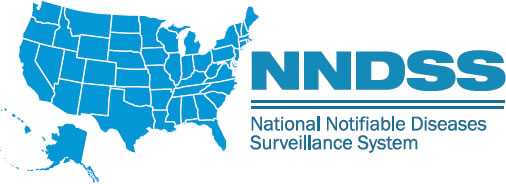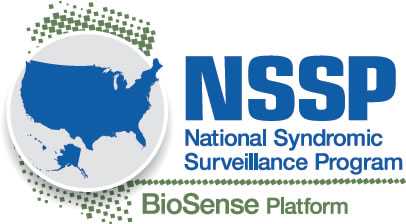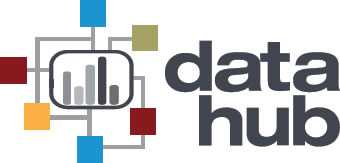DHIS Overview
Vision
Health decisions and actions are guided by timely and useful information.
Mission
The Division of Health Informatics and Surveillance (DHIS) provides leadership and crosscutting support in developing public health information systems, managing public health surveillance programs, and providing health-related data required to monitor, control, and prevent the occurrence and spread of diseases and other adverse health conditions.
National Surveillance Programs
DHIS manages two public health surveillance programs that have cross-cutting utility for multiple CDC programs and public health jurisdictions.
 The National Notifiable Diseases Surveillance System (NNDSS) is a nationwide collaboration that enables all levels of public health—local, state, territorial, federal, and international—to share notifiable disease-related health information. Public health uses this information to monitor, control, and prevent the occurrence and spread of state-reportable and nationally notifiable infectious and noninfectious diseases and conditions.
The National Notifiable Diseases Surveillance System (NNDSS) is a nationwide collaboration that enables all levels of public health—local, state, territorial, federal, and international—to share notifiable disease-related health information. Public health uses this information to monitor, control, and prevent the occurrence and spread of state-reportable and nationally notifiable infectious and noninfectious diseases and conditions.
NNDSS is a multifaceted program that includes the surveillance system for collection, analysis, and sharing of health data. It also includes policies, laws, electronic messaging standards, people, partners, information systems, processes, and resources at the local, state, territorial, and national levels.
DHIS supports NNDSS by receiving, securing, processing, and providing nationally notifiable infectious diseases data to disease-specific CDC programs. DHIS also supports local, state, and territorial public health departments in helping them collect, manage, and submit case notification data to CDC for NNDSS. DHIS provides this support through funding, health information exchange standards and frameworks, electronic health information systems, and technical support through the NNDSS web site, tools, and training. Together, DHIS and the CDC programs prepare annual summaries of infectious and noninfectious diseases and conditions, which are published in the CDC Morbidity and Mortality Weekly Report.
 The National Syndromic Surveillance Program (NSSP) promotes and advances development of a syndromic surveillance system for the timely exchange of syndromic data. These data are used to improve nationwide situational awareness and enhance responsiveness to hazardous events and disease outbreaks to protect America’s health, safety, and security.
The National Syndromic Surveillance Program (NSSP) promotes and advances development of a syndromic surveillance system for the timely exchange of syndromic data. These data are used to improve nationwide situational awareness and enhance responsiveness to hazardous events and disease outbreaks to protect America’s health, safety, and security.
NSSP functions through collaboration among individuals and organizations at local, state, and federal levels of public health; federal agencies including the U.S. Department of Defense and the U.S. Department of Veterans Affairs; public health partner organizations such as the Association of State and Territorial Health Officials, Council of State and Territorial Epidemiologists, and International Society for Disease Surveillance; and hospitals and health professionals. NSSP features the BioSense Platform and the NSSP Community of Practice (CoP).
BioSense Platform—NSSP offers access to and use of the cloud-based BioSense Platform, a common electronic health information system with analytic tools and services that enable users to rapidly collect, store, share, and evaluate syndromic data. Syndromic data include patient encounter data from emergency departments, urgent care, ambulatory care, and inpatient healthcare settings, as well as pharmacy and laboratory data. A stakeholder group of partners and BioSense Platform users provides feedback to inform ongoing development and use of the BioSense Platform. The tools hosted on the BioSense Platform increase the capacity of state and local health departments to support the Centers for Medicare and Medicaid Services’ Meaningful Use (MU) program, which is intended to expand the use of electronic health records (EHR). The BioSense Platform provides health departments a common electronic platform for collecting, storing, and sharing syndromic surveillance data.
Community of Practice—NSSP facilitates knowledge sharing and collaboration among syndromic surveillance practitioners. The NSSP CoP includes CDC-funded grantees, nonfunded states and jurisdictions that contribute data to the BioSense Platform, public health practitioners using local syndromic surveillance systems, CDC programs, other federal agencies, partner organizations, hospitals, healthcare professionals, and academic institutions.
Data Hub
 DHIS maintains a data hub that includes multiple data sets for research. One example is CDC WONDER, an application that makes many health-related data sets available to CDC staff, public health departments, researchers, and others. The data found on CDC WONDER aid users in public health research, decision making, priority setting, program evaluation, and resource allocation.
DHIS maintains a data hub that includes multiple data sets for research. One example is CDC WONDER, an application that makes many health-related data sets available to CDC staff, public health departments, researchers, and others. The data found on CDC WONDER aid users in public health research, decision making, priority setting, program evaluation, and resource allocation.
The DHIS Data Hub facilitates CDC staff access to
- MarketScan®, a suite of healthcare-related databases and tools licensed by CDC from Truven Health Analytics, an IBM Company. Access to the MarketScan® products is available to all CDC researchers whose programs contribute to supporting the annual licensing agreement with Truven Health Analytics.
- Centers for Medicare and Medicaid Services clinical claims data through the Virtual Research Data Center. Clinical claims data are valuable for public health because they can increase our understanding of access to care, healthcare utilization and practices, disease burden, and health outcomes.
- American Hospital Association (AHA) data. The AHA Annual Survey of Hospitals profiles a universe of more than 6,500 hospitals throughout the United States, gathering data on hospital demographics, organizational structure, utilization data, physician arrangements, hospital expenses, and staffing. The AHA Healthcare IT Database contains information on the depth and level of technology integration in more than 3,400 hospitals, including hospital readiness in achieving MU, primary inpatient and outpatient vendors for EHR/electronic medical record systems, and adoption of computerized systems for electronic documentation and decision support.
- Healthcare Cost and Utilization Project (HCUP) databases. Developed through a federal-state-industry partnership and sponsored by the Agency for Healthcare Research and Quality, HCUP includes a family of healthcare databases built from hospital administrative data to create a national information resource of patient-level healthcare data. The data cover hospital inpatient care, outpatient emergency department care, and hospital-affiliated and/or freestanding ambulatory surgery care data.
Information Systems
DHIS also develops information systems in support of public health programs used for data collection, exchange, and processing, including the following:
- Countermeasure Tracking Systems—multiple interoperating components that enhance the capacity of federal, state, and local public health agencies to track and manage medical and non-medical inventory and usage to support both daily operations and all-hazards events;
- Epi Info™—software used worldwide for the rapid assessment of disease outbreaks, for the development of small to mid-sized disease surveillance systems, and as ad hoc components integrated with other large-scale or enterprise-wide public health information systems;
- Laboratory Response Network Results Messenger (LRN RM) and Results Viewer (LRN RV)—software that provides LRN laboratories with the ability to manage and share standard laboratory results data securely with public health partners;
- Message Quality Framework, Messaging System, and Vocabulary Access and Distribution System—tools and resources that help increase the capacity of public health agencies to electronically exchange health data and information;
- Message Validation, Processing, and Provisioning System—software in development that will validate and process nationally notifiable disease case notification messages sent by jurisdictions and will provision data to CDC programs; and
- National Electronic Disease Surveillance System Base System—a CDC-developed integrated information system that helps local, state, and territorial public health departments manage reportable disease data and send notifiable disease data to CDC.
- Page last reviewed: November 22, 2016
- Page last updated: November 22, 2016
- Content source:



 ShareCompartir
ShareCompartir